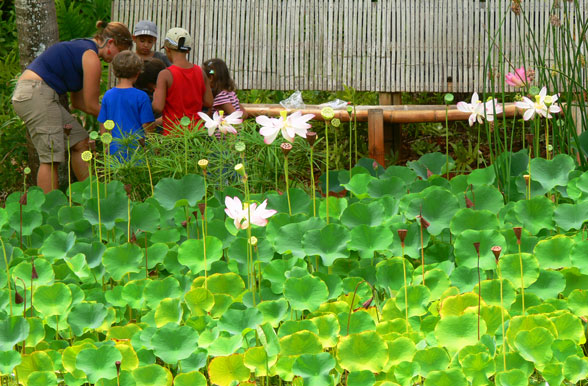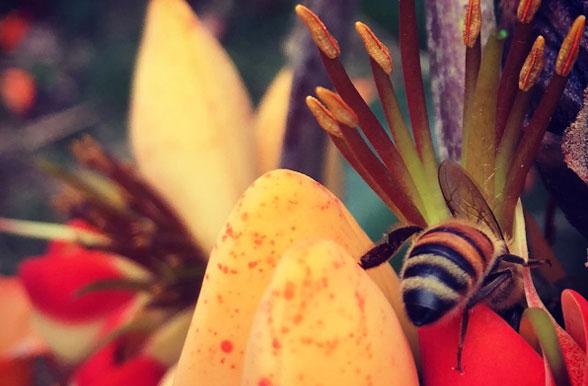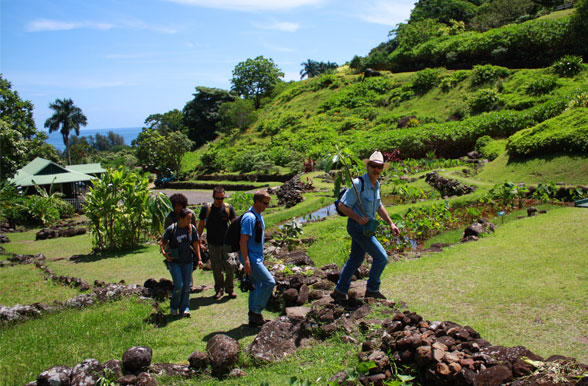Drone Program
In 2016, soon after NTBG began experimenting with drones to map its gardens on Kaua‘i, it became clear that drones could also be used to search for rare plants in inaccessible cliff habitats. NTBG botanists had been collecting plant material from some of the world’s most endangered species by rappelling over Hawai‘i’s sea cliffs for decades, but drones enabled them to extend their range like never before.
NTBG’s first field surveys using a drone were on the north shore of Kaua‘i in remote areas of the Limahuli Valley where they located laukahi (Plantago princeps var. anomala) and ‘akoko (Euphorbia eleanoriae), two species that had never before been documented on the north shore. With fewer than 50 known individuals left in the wild, laukahi is classified as a “PEPP” species by Hawai‘i’s Plant Extinction Prevention Program (PEPP). ‘Akoko, was removed from the PEPP species list after drone surveys located populations exceeding 50 individuals.
Subsequent drone surveys located populations of dwarf iliau (Wilkesia hobdyi), revealing that there were ten times more wild plants than previously estimated in ground surveys. In 2018, using a quadcopter drone, NTBG botanists found Hibiscadelphus woodii, a Critically Endangered distant relative of hibiscus previously believed to have gone extinct. Using drones to explore cliff habitat proved that some of the most endangered plant species may still exist in otherwise impossible to reach places.
A 2020 National Geographic Society grant allowed NTBG to collaborate with researchers at Outreach Robotics to develop and test a robotic sampling mechanism that can remotely collect seeds and cuttings from sheer cliff faces. The Mamba robotic arm, carried by a drone, has been used with remarkable results, allowing for the safe, quick, and effective collection of species never before found on Kaua‘i (Isodendrion pyrifolium) and a potentially undescribed species (Schiedea sp. nov.).
By adopting the use of drones and other technologies, NTBG is able to locate, collect, and retrieve seeds and cuttings that can be quickly delivered to its nursery for propagation and an eventual return to the wild. Drones are also helping NTBG answer questions about species distribution and the abundance of previously unknown plant populations, extending the reach of botanists like never before.
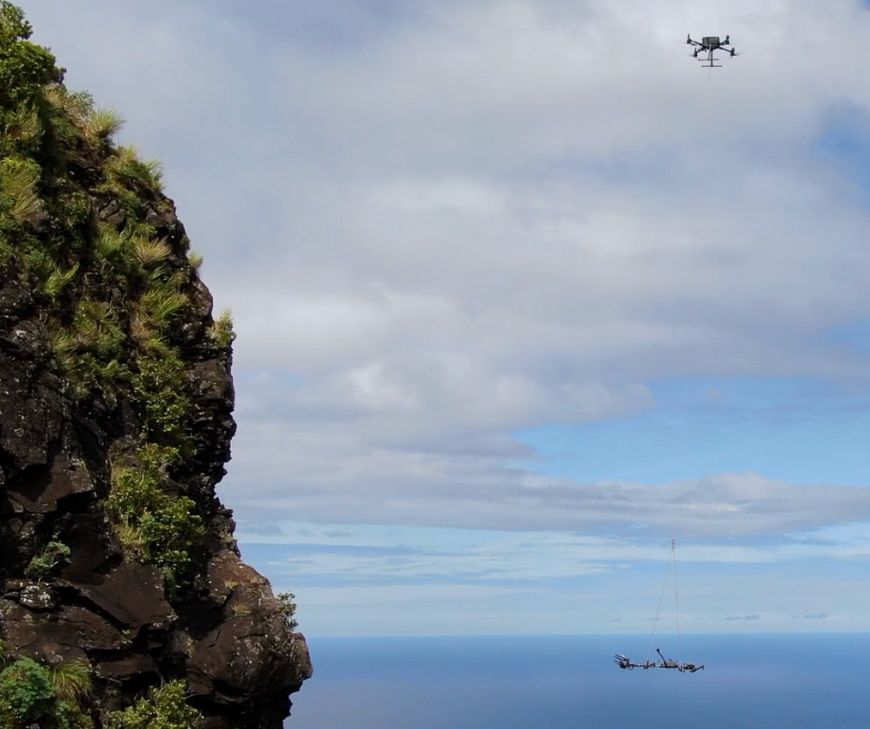
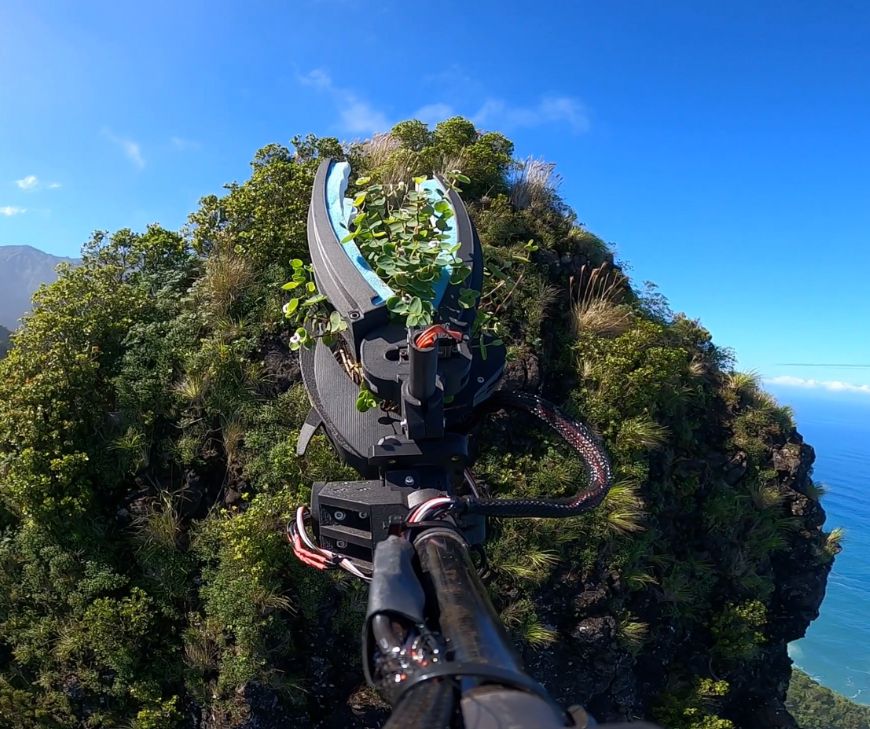
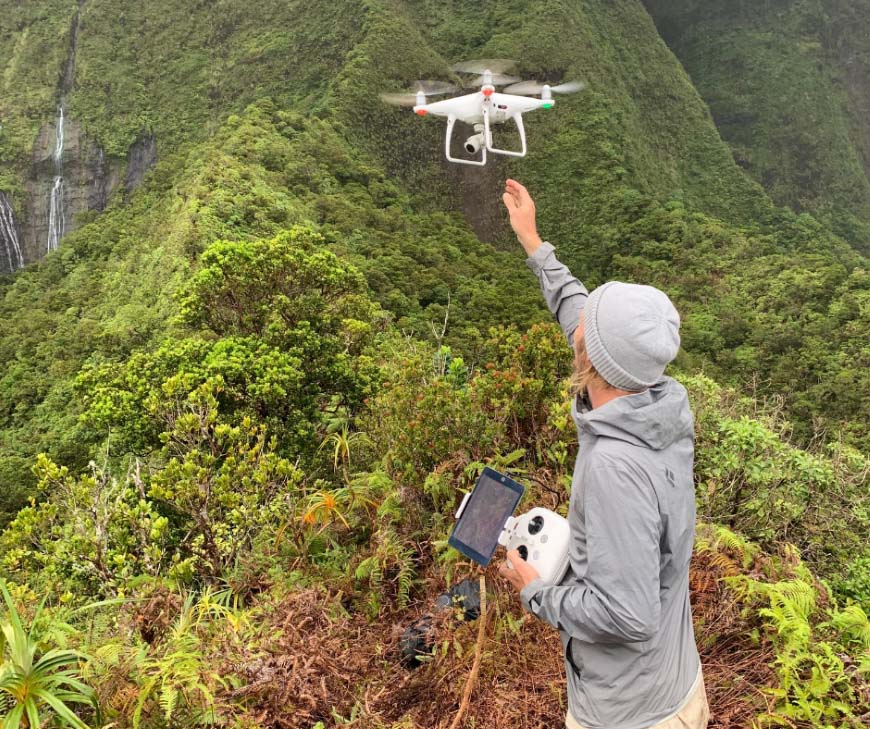
Our Partners
NTBG’s collaboration with Outreach Robotics and the University of Sherbrooke in Quebec began in 2020. Trial flights using Mamba include partnering with the State of Hawaii’s Department of Land and Natural Resources Division of Forestry and Wildlife (DOFAW) and the Plant Extinction Prevention Program. National Geographic supported the development of the Mamba and Mohamed bin Zayed Species Conservation Fund has supported drone explorations.
Support our work to seed a brighter future for tropical plants.




